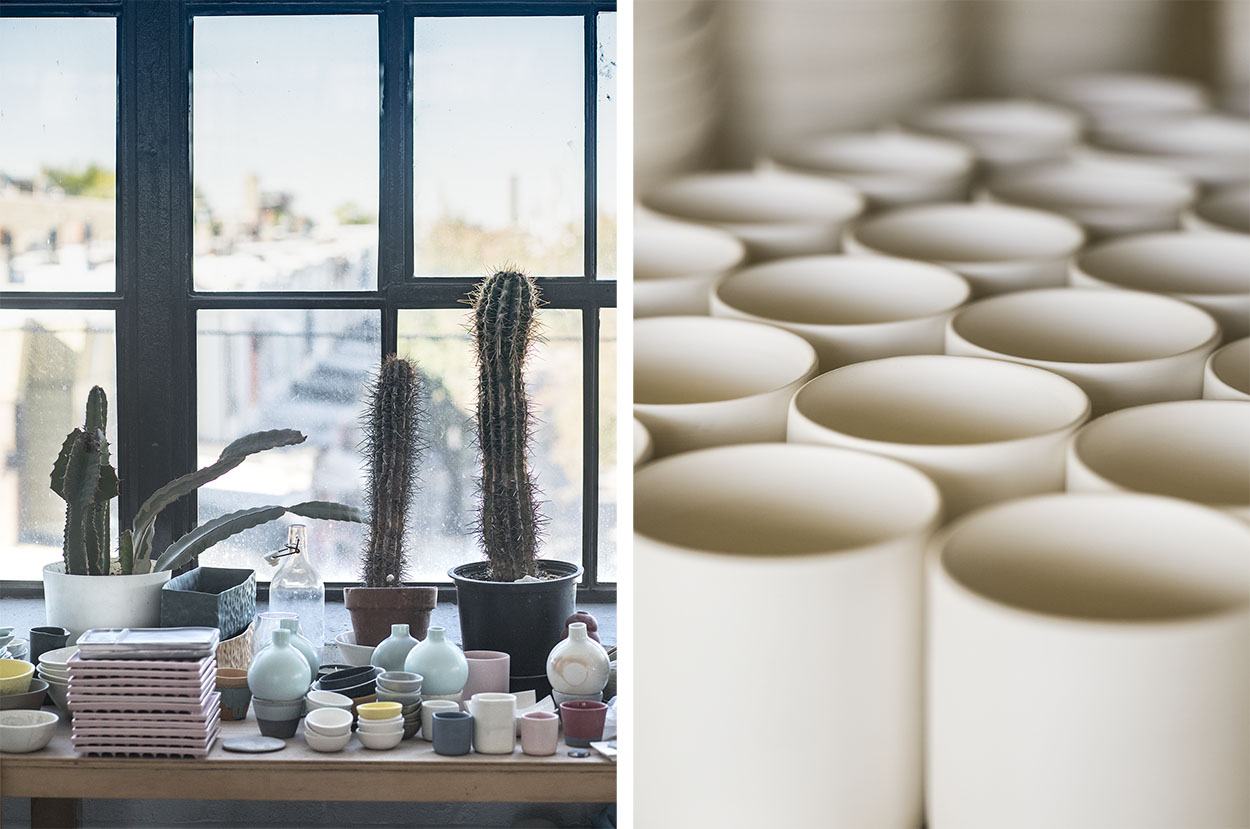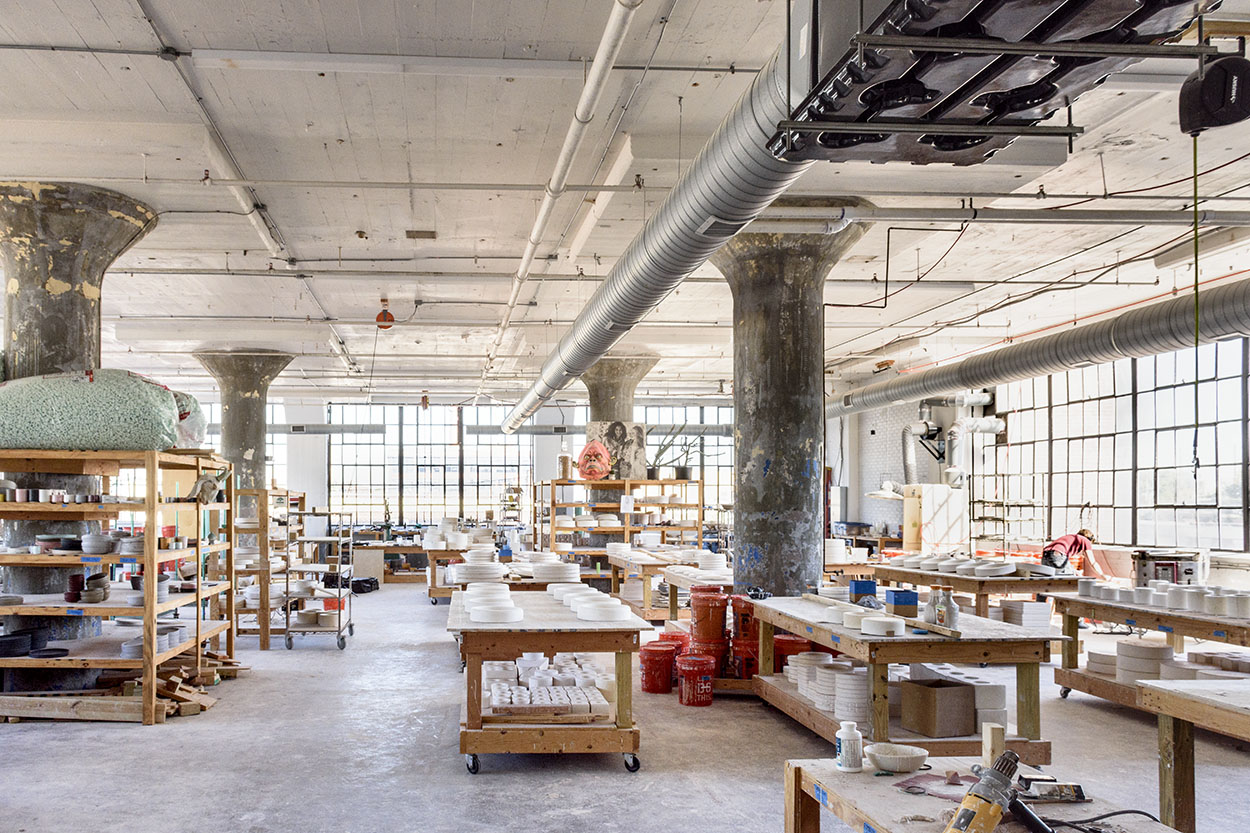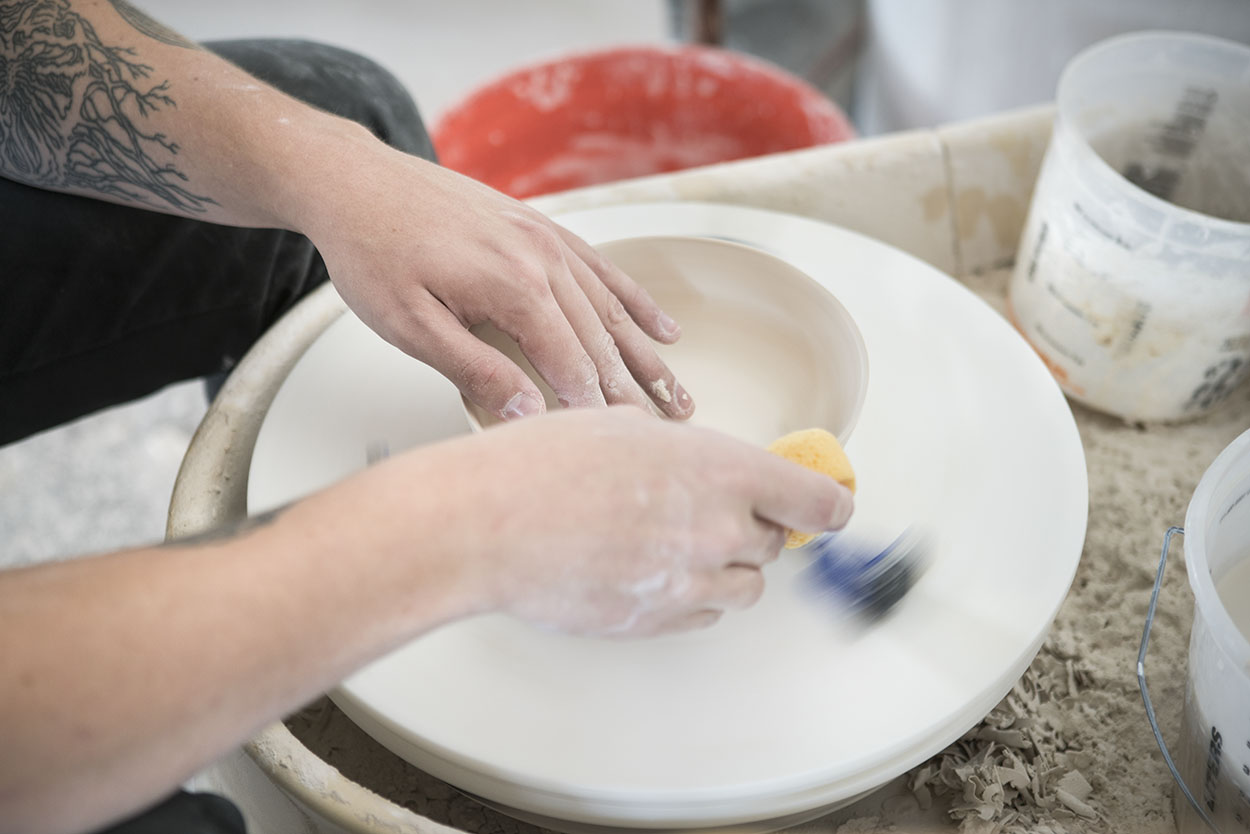Editor’s Note: After this story was published we were notified that Nate Mell has been accused of sexual assault. Had we known about the accusations, we would not have run the story.
Meet the Philadelphia Ceramist Taking the Restaurant World by Storm
Felt + Fat cofounder Nate Mell discusses creating custom tableware with top chefs, the intersection of food and design, and the art of fine dining.
INTERVIEW BY TIFFANY JOWPHOTOS BY TONY WOOD
VIDEO BY REID CARRESCIA December 07, 2001
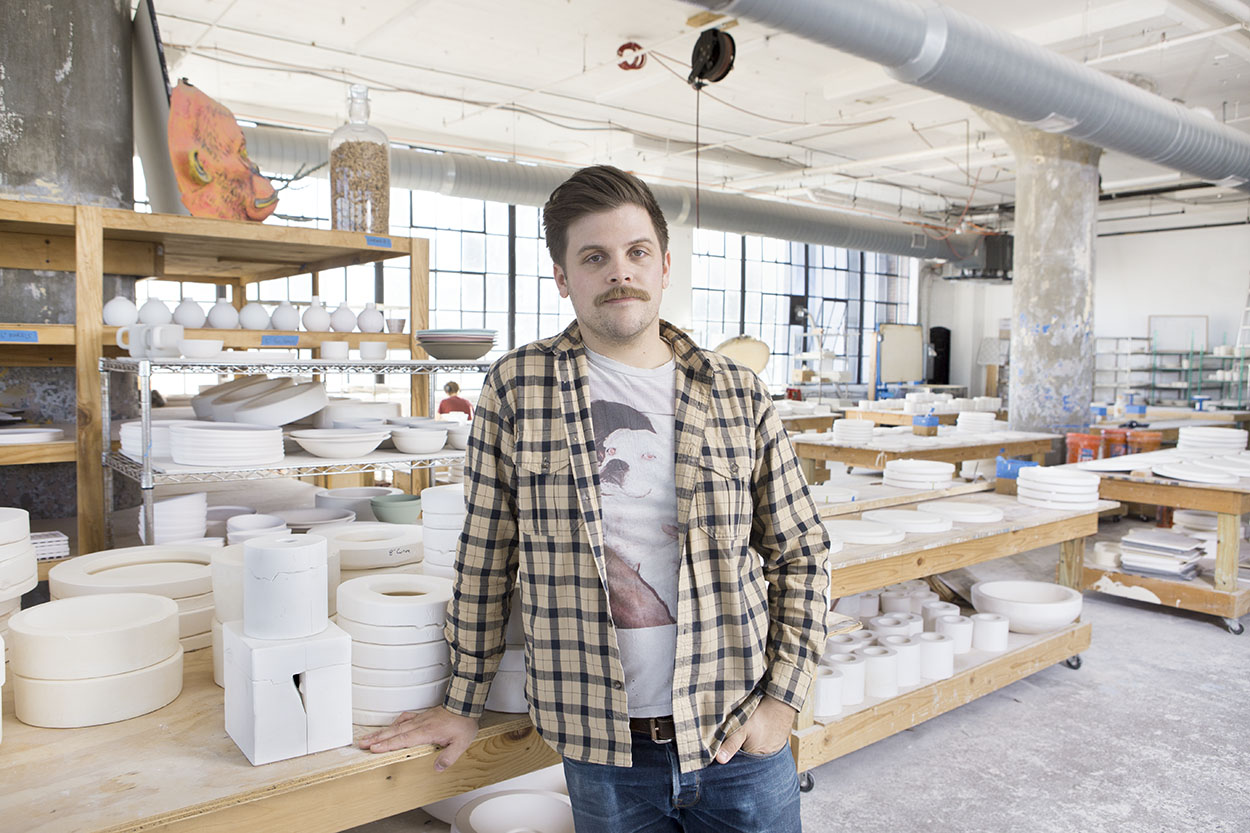
You studied glass at Temple University’s Tyler School of Art, but ultimately turned to clay. What is it about the material that excites you?
Glass is a great medium but hard to [work with] in the real world. I started doing mold-making because it translates to a lot of different materials. With ceramics, there’s this immediacy of getting your foot in the door. All you need is to be able to get [the clay] hot—you can get a kiln on Craigslist for a couple hundred dollars if you know what you’re doing. After school I started working at the Clay Studio, a Philadelphia institution that’s been around since the sixties, and worked in restaurants to pay the rent.
A lot of people do that while figuring out their next step, but the restaurant experience had a lasting impact on you.
Right. I was working at a restaurant called Fork when it brought on Eli Kulp, a chef who’d previously worked at places like Mario Batali’s Del Posto in New York. He came to Philadelphia because he wanted to be at the helm of something and have a lot of creative control. It was the first time I really understood what a front-of-house did. It’s almost like an art practice, where there are all these moving parts to make this one ephemeral thing.
Kulp went on to open High Street on Market, the first restaurant you created custom tableware for. How did that come about?
One day in 2013, Eli said, “Nate, you’re a ceramicist, right?” Anybody you asked would probably say I was not a ceramicist, but I said I was. He told me he was opening a new restaurant and wanted to work with someone local to make custom tableware for it. I said I’d do it. I thought it’d be a learning experience. I’d never made a plate in my life.
Good timing. Your foray into tableware happened right at the beginning of the ceramics moment.
Working on the project got me really interested in tableware—simple, everyday objects used in everybody’s homes and every restaurant. A year or two after that, there was a Whitney Biennial where these big artists started using ceramics. Then there was an upsurge of ceramicists on Instagram. I saw the writing on the wall: Ceramics were cool. At the same time, I noticed restaurants shifting away from traditional porcelain. That’s where restaurants like Noma were going—they used Aage and Kasper Würtz, an amazing Dutch father-and-son ceramic duo. I decided to just go with it.
Felt + Fat has since collaborated with loads of restaurants, including Laurel in Philadelphia, the Michelin-starred Musket Room in New York, the Front Room Tavern in Dallas, and Cue, a new café in Doha, Qatar. Do you work closely with chefs on each collection?
Early on everything was custom, because we didn’t have any designs. People came to us with an idea of what they wanted to make. We’d make a plate we liked, then make the same plate in several sizes: a share plate, a saddle plate, a dinner plate, that kind of thing. One chef gave us a drawing. Others had a more general need, like wanting a sauce to pool in a certain way.
In 2015, the studio expanded into making commercial products, which are now stocked at The Primary Essentials in New York, Jouw in the Netherlands, and Stay in Los Angeles, among others. Fewer than ten people work here. How do you keep up with the demand?
We make everything by slip-casting, a ceramic process that’s used in a lot of production facilities. You make an original piece, then make a plaster mold out of it. Then you pour in slip, which contains a deflocculant that helps suspend the clay evenly in the water. The plaster is porous and sucks the moisture out of the slip, so you get a skin everywhere the plaster is touching. We use kitchen timers to know how long it needs to cast before it’s ready to dump out. After that, we’ll pop it out of the mold and fire it in our bisque kiln at about 1,800 degrees. Then it’s glazed and fired in a glaze kiln at 2,300 degrees. Each piece shrinks about sixteen percent from start to finish.
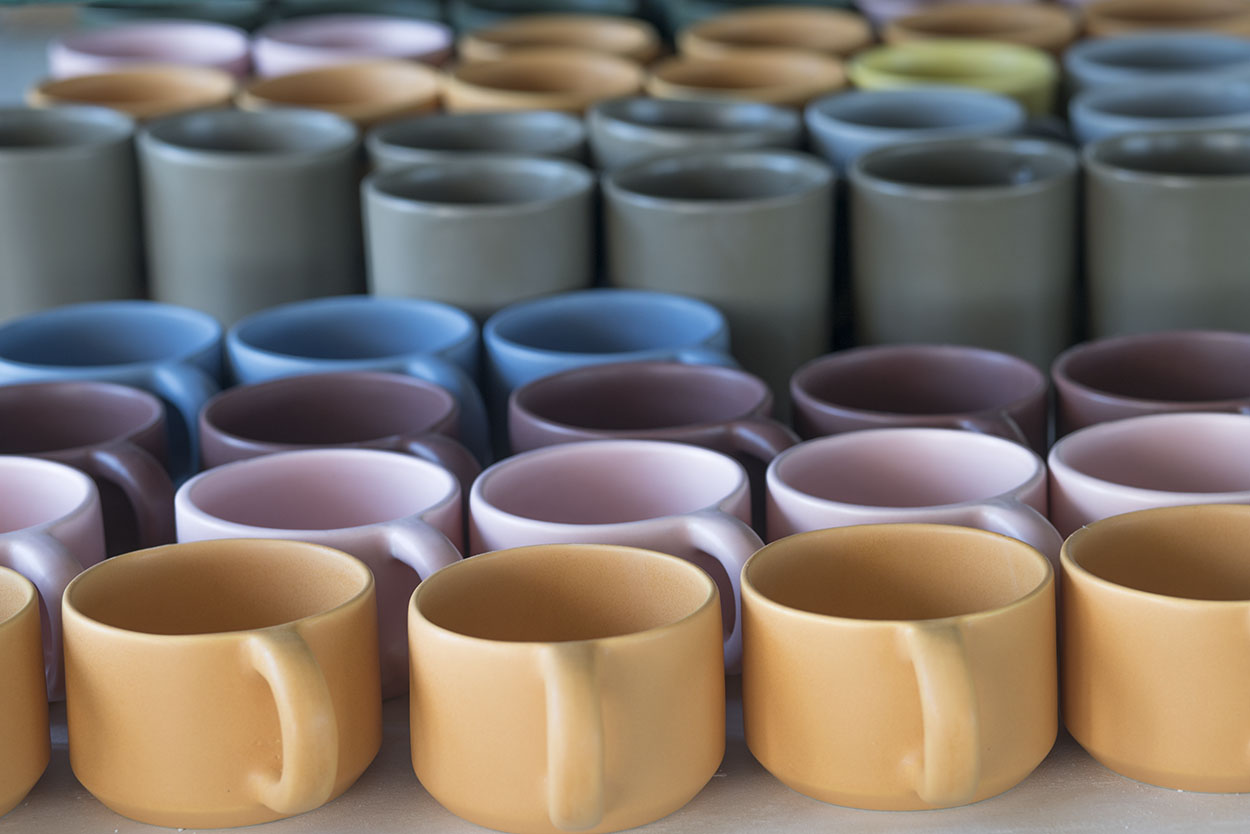
Something really distinctive about the studio’s work is the color of each piece. All your glazes are made in-house, which gives you a lot of control and the ability to customize.
We make our own clay here, too. Until we got an industrial mixer earlier this year, we were mixing it in trash cans with a hand drill, which, in case you didn’t know, is not very efficient. For any color, we make ten to twenty iterations of it until we get one we’re really into. We work with a ceramics engineer to help us key in to our glaze chemistry. All this stuff is about chemistry.
In February, Felt + Fat is participating in the inaugural Venice Food Design Week. How do you see the relationship between food and design?
A really good chef is thinking about the atmosphere, the temperature, the chairs, and the tableware, certainly. For a long time, fine dining only used French and German porcelain: thin, elegant objects that showed off their high degree of class and craftsmanship. Now, there’s a shift toward a kind of warmth, seeing the hand, and knowing where things come from. Within that, there’s a move in fine dining, and design as well, toward homey and warm and also, like, excellent.
Felt + Fat has aspirations to open its own brick-and-mortar shop, and be in people’s homes around the country, while continuing to work with chefs. How would you describe what the studio is doing today?
We’re trying to make something that is bigger than one person. Felt + Fat is not about me, my designs, or anything like that—we have a whole team. We’re trying to build something that lasts a long time, introduces something into people’s lives, creates a community around art and food, and kind of brings everybody in.
